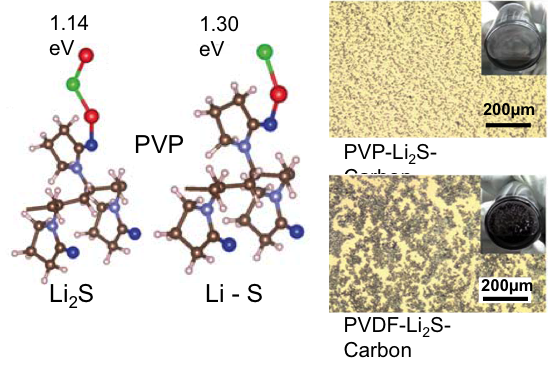
Scientific Achievement
Demonstrated record performance in Li2S cathodes using innovative molecular design based on ab initio density functional theory
Significance and Impact
New Li2S cathodes can be paired with safer, lithium metal-free anodes for high efficiency and capacity batteries for vehicles and grid-scale energy storage
Research Details
- Density functional theory was used to identify functional groups commonly found in binder materials that have the strong O-Li bonds required to stabilize both Li2S cathodes and Li polysulfide intermediates essential to the electrochemistry of Li-S batteries.
- Molecular design approach identified PVP, poly(vinylpyrrolidone), as a promising binder material for Li2S cathodes in Li-S batteries.
- Tests with the new binder produced 40% increase in capacity over 500 cycles and only half the polysulfide loss after 20 cycles compared to conventional binders.
- Molecular design is a promising new approach to identifying low cost, high performance materials for next generation batteries.
Work performed at SLAC National Laboratory (JCESR partner institution), Stanford University and Beihang University, China. Z.W. Seh, Q. Zhang, W. Li, G. Zheng, H. Yao and Y. Cui, Stable cycling of lithium sulfide cathodes through strong affinity with a bifunctional binder, Chem. Sci., 2013, 4, 3673.
DOI: 10.1039/c3sc51476e

